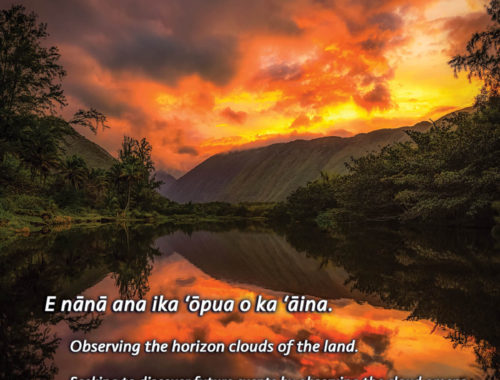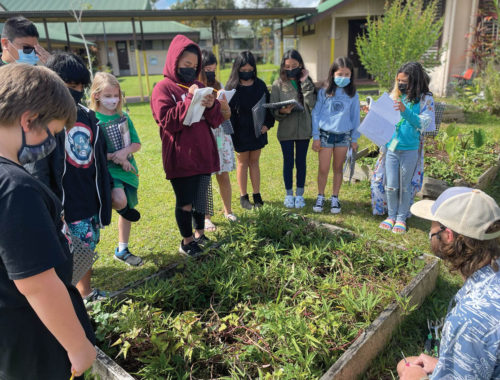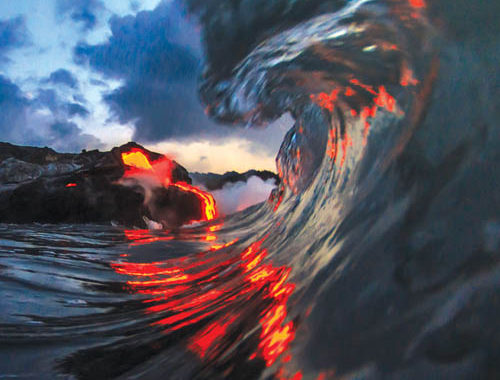
Donnie’s Thanksgiving: First-hand Story of Halapē’s 1975 Tsunami

By Leslee Engler and Donnie Cruz
If you lived through an earthquake and tsunami on the beach where your family was camping, you would remember that very clearly. It took place 47 years ago, and Donnie Cruz remembers every minute of that terrifying night in 1975 when Madam Pele took the life of her brother.
It was Thanksgiving Eve when the Cruz ‘ohana rode several horses on the long trail to Halapē Beach in Kahuku, Ka‘ū, to camp. All 13 keiki of Alfred “Rico” Cruz were there.
The low tide at midnight was their time to pick ‘opihi from the rocks to add to the wedding feast of Donnie’s cousin. ‘Opihi are a traditional delicacy that would assure many children to the celebrating couple.
Thirty-two people were enjoying the perfect weather on the beach that night; a Boy Scout troop had also hiked there from Chain of Craters Road to camp under the trees called Coconut Grove, as they did every year.
The kūpuna were gathered uphill at the cabin talking story, watching the horses that were in the corral beneath Coconut Grove, and overseeing the ‘opihi picking.
With campfires burning on the beach, the Boy Scouts told each other ghost stories on this night of a bright full moon.
Low tide was timed with the highest point of the moon. The pickers went down to the beach with their sacks for gathering, and knives for prying the shells holding fast. The waves were not large on the south coast of the island that night. The soothing rhythm of the waves as they danced on the beach sang the perfect lullaby of Hawai‘i. The pickers felt the magic—and then they felt the quake.
The earthquake Madam Pele made at Lae‘apuki between Halapē and Kalapana stunned everyone for miles. People all over the island stood petrified, all senses on high alert, waiting for what would come next. The 5.7 magnitude quake jolted the ground all the way to Hilo, but Halapē felt it most.
The keiki, still awake picking ‘opihi, looked to the kūpuna who had felt the rumbling of Madam Pele many times, but not like this. It was 3:36am.
The horses became very restless before the quake and now were near panic. Donnie’s brother, Michael “Micky,” 27, went to check on them. All were tied up and safe, until suddenly came the crash of boulders flying downhill. The sound came from everywhere, bouncing off Hilina Pali and then back again.
The ‘opihi pickers didn’t know where to run in the confusion, until they saw the water being sucked away from the beach and knew to run fast, away from the beach. A tsunami! But, the crashing boulders were coming downhill in a huge wave of their own. Which way was safe? The campers were between two huge powers of nature they could not stop. Most ran uphill. They sensed the thundering sound was a huge landslide bearing down on them so they ran to the sides. Several tucked themselves into cracks in the face of Hilina Pali, which formed the west side of the bay.

The first wave hit 84 seconds after the quake. It crashed on shore in a five-foot wave. Everyone knew it was only the first—the next one would be bigger!
The Boy Scout leader, Dr. James Mitchell, yelled to everyone to run for high ground. They did and it saved their lives.
Thomas Amar, 27, was looking to help Rico and Dr. Mitchell. Thomas saw Rico and yelled, “Run Dad!” Rico yelled back, “No can! I no more slippahs!” They ran anyway, for the trail leading uphill across the sand. On the pāhoehoe lava trail there had always been a crack to step across. Now the crack had split too wide to jump across and had filled with water. Several people couldn’t see it in the dark and fell in, including Rico and Dr. Mitchell. Horses, logs, and rocks fell in, too, all hitting the sides as the water sloshed. That was when many were hurt and is apparently when Dr. Mitchell died—his body was found in the crack.
Thomas heard the wave coming right behind him and jumped. The wave picked him up and carried him across the huge crack. The dauntless power that could have caused his death saved his life instead.
A man on the scarred open edge of the crack thought he was holding up his son from drowning. He had the unconscious Rico instead.
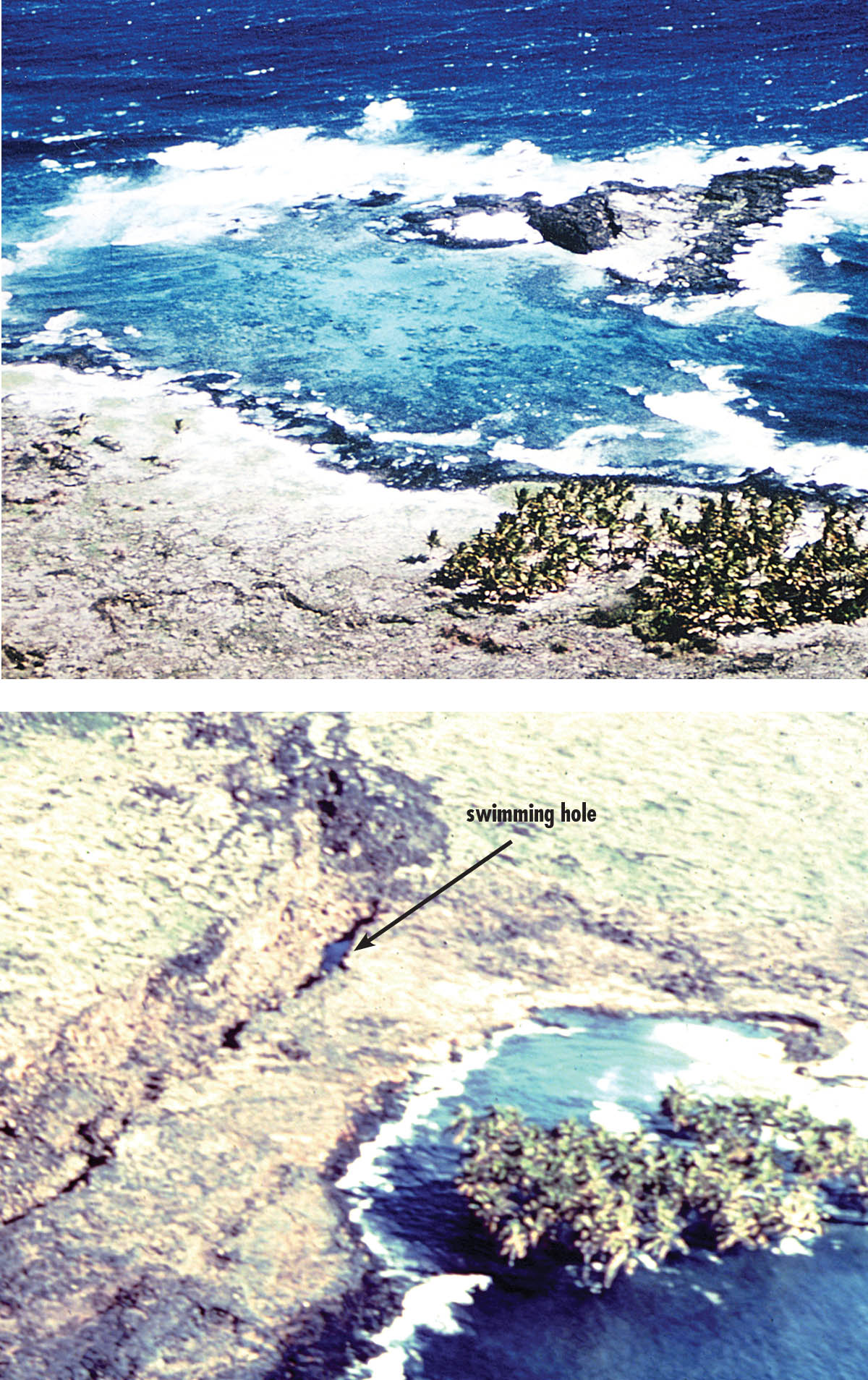
The second earthquake shook the feet of Kīlauea at Kamoamoa. It was bigger than the first at 7.2 magnitude, the largest local quake since 1868. The summit of Kīlauea moved four feet outward and four feet down with the mighty shake. It was 4:48am and still very dark, with the sky filled with the dust of crushed rock.
The roar of crashing rock was even louder than before and just as confusing. It gathered sound as it gathered speed. The screams of horses were just a whisper.
Now the biggest tsunami crashed on everything that was before it. Even the rocks still sliding downward to challenge the mountain of water did not prevail. The wave rose 26 feet above the beach, along the pali wall. This is when the very land itself broke off and slid down, across what had been the beach. It carried Coconut Grove with it, which settled 10 feet below the surface. Only the top 30 feet of the giant palms were visible. Most of the horses went with it. Micky, too. He was not seen again.
Nineteen of the 32 people were injured and two were dead. People who were able, bandaged and soothed the injured, even though they themselves were exhausted. Rico survived thanks to the strength of the man who held him up. The man’s son also survived.
A young cousin of Donnie’s ran for help in the dark. He ran across Kahuku on the lava path to Chain of Craters Road and up to the summit ranger station, about 18 miles and 4,000 feet in elevation gain in about an hour. Only a boy bent on saving his whole family could do such an impossible thing. He reached the ranger station but the rangers didn’t believe he could have done that run in such short period of time. Rico had registered the trip at the ranger station, listing the names of all the ‘ohana in the party, including the name of the boy who ran—the rangers didn’t believe that either. They delayed a search until dawn so they could ride a helicopter to the site. They were shocked to find the boy was right—destruction was all Madam Pele left behind.
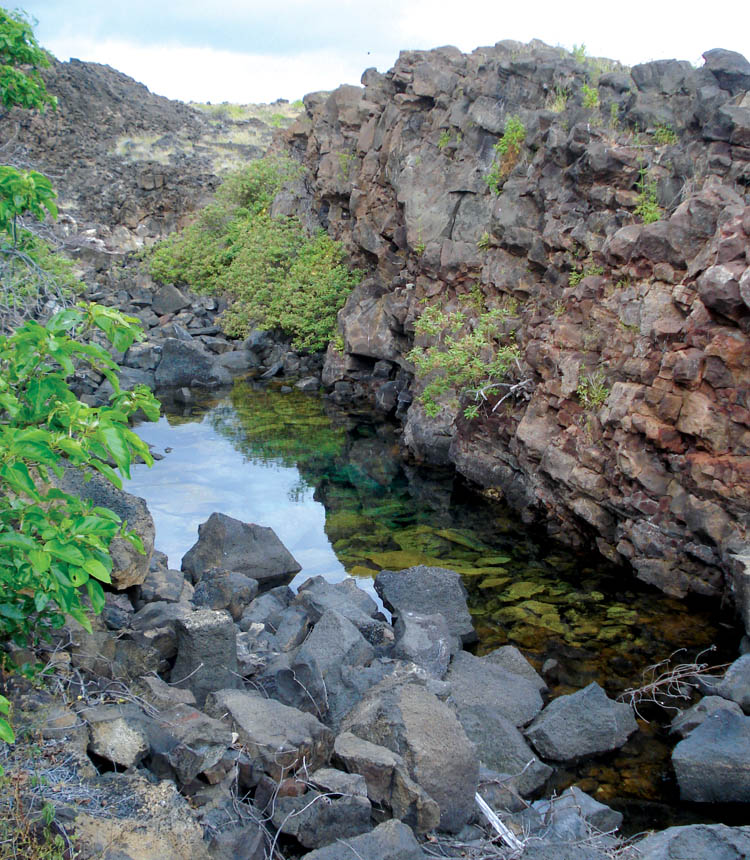
It took hours and many helicopter trips to evacuate all the survivors. They were taken to the hospital in Hilo. Most were released that day to their ‘ohana with cuts, bruises and trauma. At least one boy had a broken leg. Micky was not among them.
At the feet of a young boy who was sheltering against Hilina Pali was a crack in the ceiling of a lava tube, revealing a burial canoe. Two paddles were crossed inside. There was a split following the grain of the bottom making it unsuitable for paddling in the sea. In this way it was marked as a burial canoe. This canoe was also removed by helicopter and taken to the ranger station to be sent to Bishop Museum.
This same type of canoe had been used for carrying the body of kūpuna across the uneven lava at the base of Hilina Pali to their final resting place. Each ‘ohana owned their own sacred crypt, made for them by Madam Pele as lava tube openings at Hilina Pali. The bodies and cremated remains of their family had rested safely there for hundreds of years, and now, they were revealed.
In Ka‘ū there are still kūpuna who know the ancient Kanaka Maoli (Native Hawaiian) ways of divining the future. They told Micky a few years before the tsunami that he would pass at age 27 in a tragic accident, which made him reluctant to go ‘opihi picking that night. It was to these kūpuna that Rico turned for help to find Micky. Donnie had searched the beach for her beloved brother. She found his picking bag. Then his knife. Then his belt on a stick pointing to the now sunken Coconut Grove. She didn’t know what this would mean, but the kūpuna did. They chanted and prayed for knowledge of where Micky was for four days, until they saw the answer. They told Rico they saw Micky buried under three crosses, so Rico and some of his ‘ohana went back to Halapē. They were thankful to the kūpuna when they saw the three crosses of the horse corral gate that washed to the sea atop the rocks that buried Micky. He lies there today with the prayers and blessings of his ‘ohana. To this day Donnie takes ho‘okupu (offerings) to chant and pray for him on his birthday. It is tradition, and it means even more than that to Donnie. She and her ‘ohana have blessed him with love in this way for 45 years, and she will continue. ❖
Editor’s Note: Donnie shared this story with Leslee as she remembers it from 47 years ago. Scientists recorded it somewhat differently, namely the 5.7 earthquake at 3:36am didn’t generate a tsunami—the first wave was huge, but not a tsunami. The actual tsunami was generated by the much larger 7.2 quake at 4:48am. The first wave was still extremely dangerous and caused the trouble Donnie describes.

